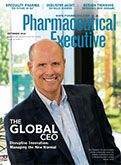FDA Struggles to Advance Biosimilars
Pharmaceutical Executive
New Action Plan aims to streamline development, but rebates and reimbursement block market access.
A central strategy for enhancing access to more affordable medicines for the Trump administration, Congress, and FDA involves smoothing the pathway for the development and approval of high quality biosimilars and interchangeable biotech therapies. Yet, even though FDA has approved 12 biosimilars, only four have come to market since Congress authorized follow-ons eight years ago. Those delays cost American consumers more than $4.5 billion in 2017, according to a recent FDA analysis.
Jill Wechsler

The main culprits are the lengthy patent challenges and difficult payment policies that stymie biosimilar coverage and prescribing. More complex testing requirements put the cost of developing a biosimilar at $100 million to $250 million per program, much more than the $10 million involved in producing a new generic drug. Consequently, biosimilars come to market at prices only 15% to 20% below the innovator, which often is not enough difference to drive reimbursement. In several speeches over the last six months, most recently in July at the Brookings Institution, FDA Commissioner Scott Gottlieb lamented the “anemic” growth of the US biosimilars market, blaming innovator rebating schemes and contracting practices for blocking less costly therapies from patients.
Gottlieb also announced FDA’s much-anticipated Biosimilars Action Plan, which lists a range of FDA initiatives for establishing a more efficient review process, including greater scientific and regulatory clarity for sponsors and tools for using modern analytical techniques. Most observers found little new in the plan, but acknowledged potential benefits from expanding the Purple Book to make it more useful and from a possible data sharing agreement with European and other regulatory authorities to facilitate increased use of foreign comparators.
FDA also issued final guidance on biosimilar labeling, and more guidance documents are expected on biosimilar data analysis methods, managing post-approval changes, and demonstrating interchangeability with a reference product. To encourage greater uptake of biosimilars, FDA also plans more education of clinicians and patients on biosimilar safety and efficacy to address misconceptions that foster reluctance to prescribe and use these therapies. Biosimilar makers also anticipate that an efficient path for demonstrating product interchangeability with brands will help build prescriber and patient confidence in switching to the new products.
Challenging rebates
Meanwhile, FDA has set biosimilar user fees for 2019 based on an expectation that it will assess and approve 23 biosimilars in the coming year, and that more will come to market as a number of leading biotech therapies lose exclusivity protection. As of July 1, more than 60 biosimilar development programs to 31 different reference products were in the FDA pipeline, prompting the Center for Drug Evaluation and Research (CDER) to establish a new office to better integrate biosimilar policy and review functions to smooth the regulatory process.
But FDA efforts to streamline biosimilar testing and approvals will have limited effect on the market so long as “rebating schemes” or “patent thickets” continue to deter the entry of approved biosimilars, Gottlieb stated in his July speech. Brands “thwart competition by dangling big rebates to lock up payers in multi-year contracts right on the eve of biosimilar entry,” he complained. And volume-based rebates further encourage health plans to require prior use of a brand before permitting access to a biosimilar, a requirement that the commissioner said has “no clinical rationale.”
Gottlieb also expects FDA’s Action Plan will support market competition by reducing “gaming” of FDA requirements, such as using risk evaluation and mitigation strategies (REMS) to prevent biosimilar makers from obtaining reference products needed for testing. But a main focus is on publicizing how the “rebate trap” permits pharmacy benefit managers (PBMs) and insurers to profit from the spread between list price and the actual rebated price for an innovator therapy, which can amount to hundreds of million dollars in annual revenues for plans.
Jill Wechsler is Pharmaceutical Executive’s Washington Correspondent. She can be reached at jillwechsler7@gmail.com

FDA Approves Opdivo Plus Yervoy Regimen for MSI-H/dMMR Colorectal Cancer
April 9th 2025Approval of the Opdivo plus Yervoy combination regimen was based on results from the Phase III CheckMate-8HW trial, which was the largest immunotherapy study in patients with previously untreated, unresectable, or metastatic microsatellite instability-high or mismatch repair deficient colorectal cancer.
Navigating Distrust: Pharma in the Age of Social Media
February 18th 2025Ian Baer, Founder and CEO of Sooth, discusses how the growing distrust in social media will impact industry marketing strategies and the relationships between pharmaceutical companies and the patients they aim to serve. He also explains dark social, how to combat misinformation, closing the trust gap, and more.